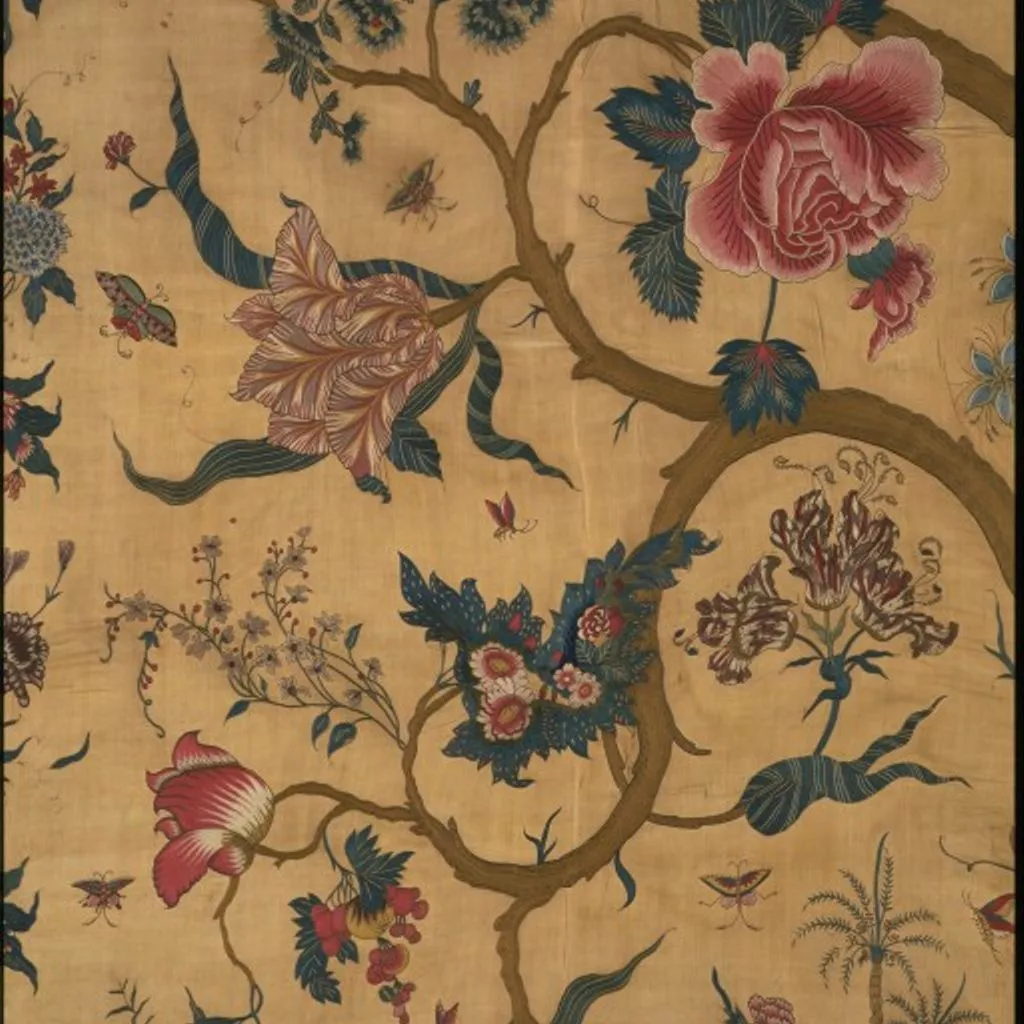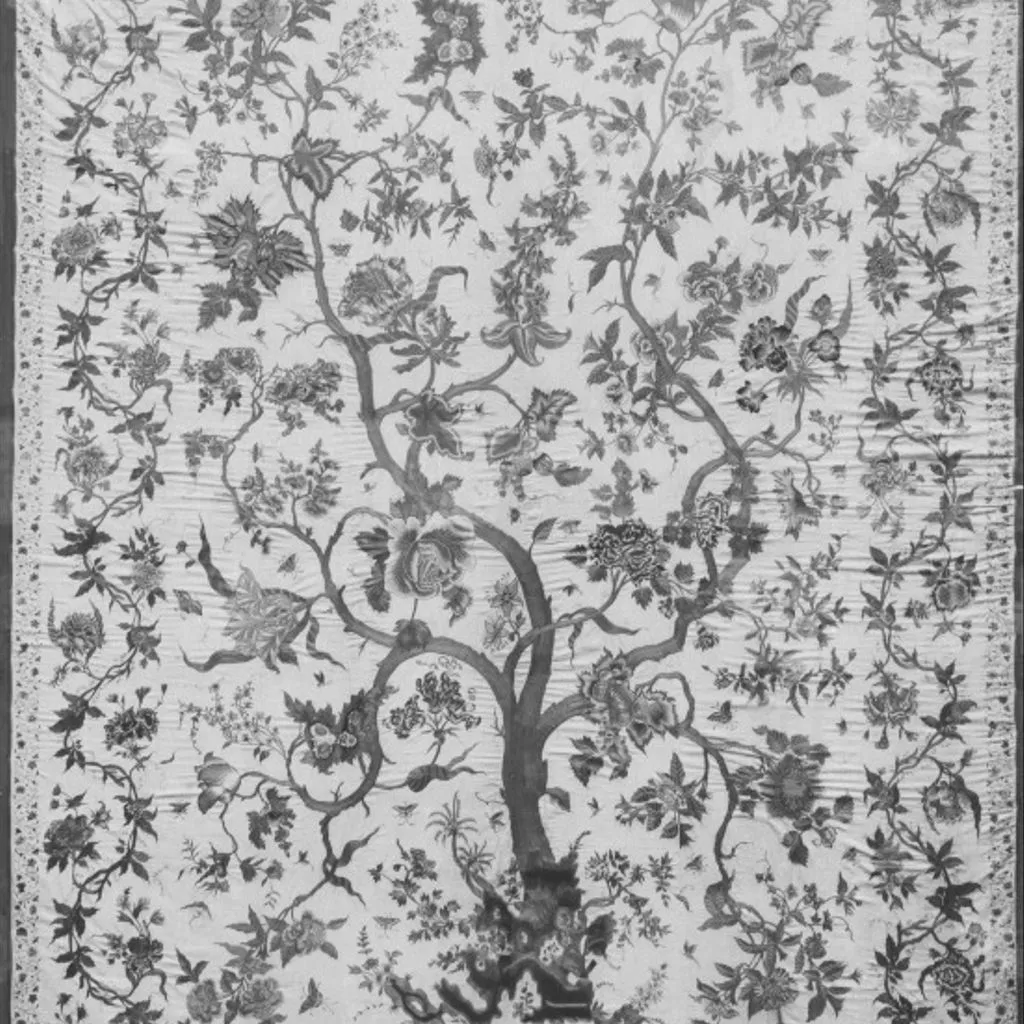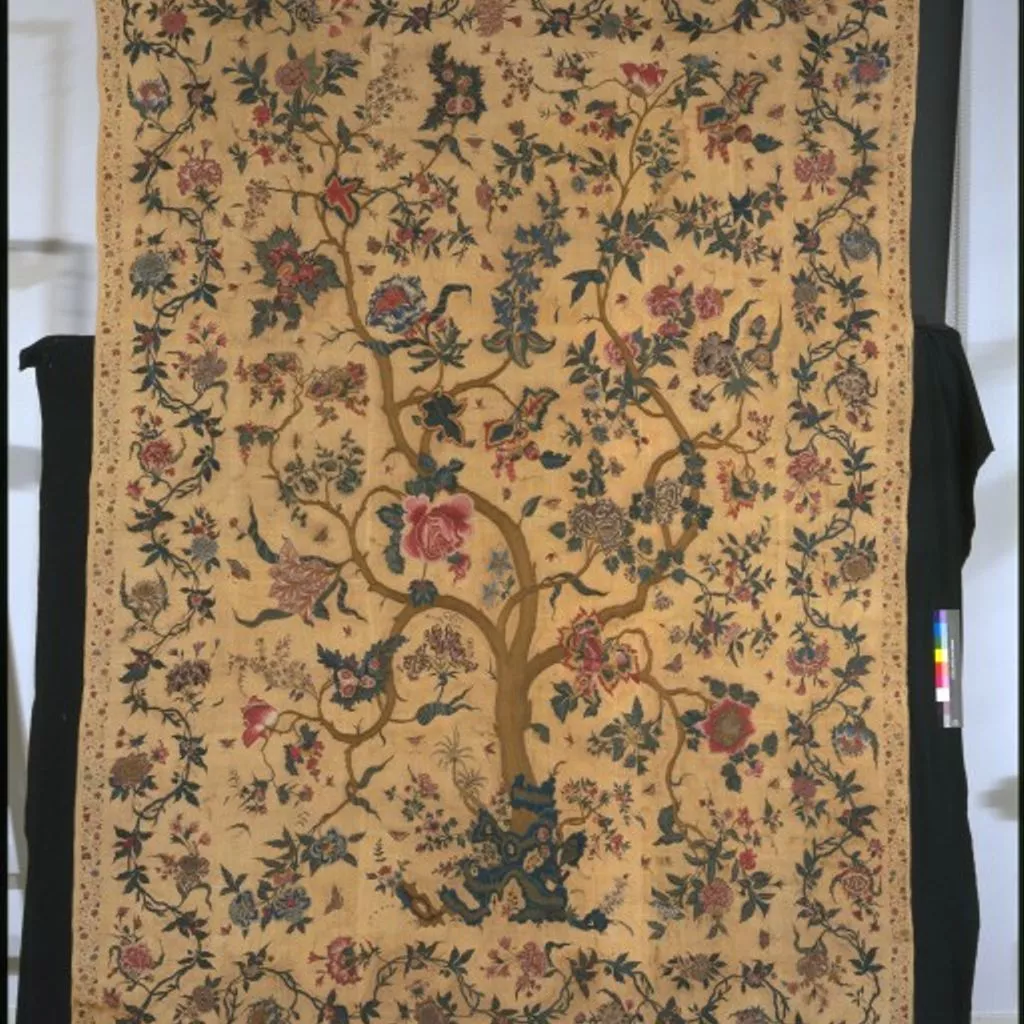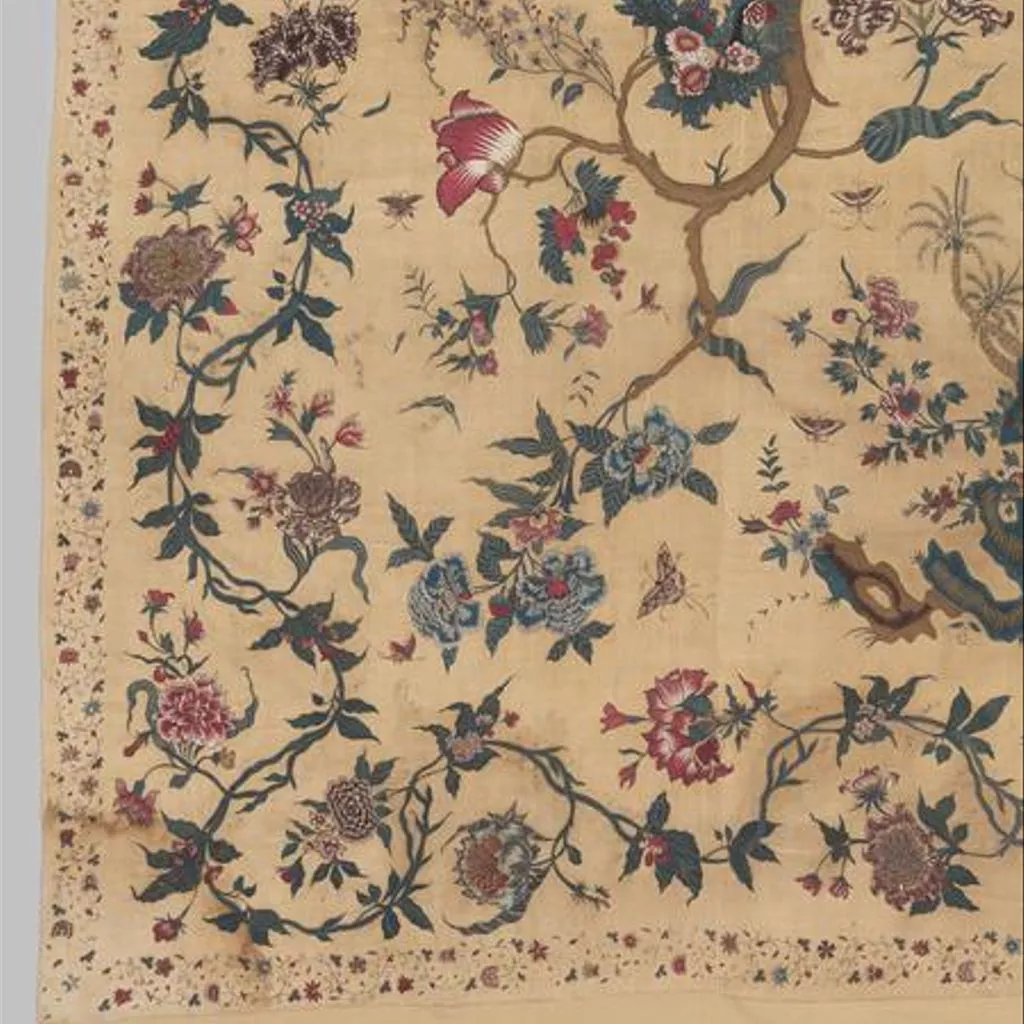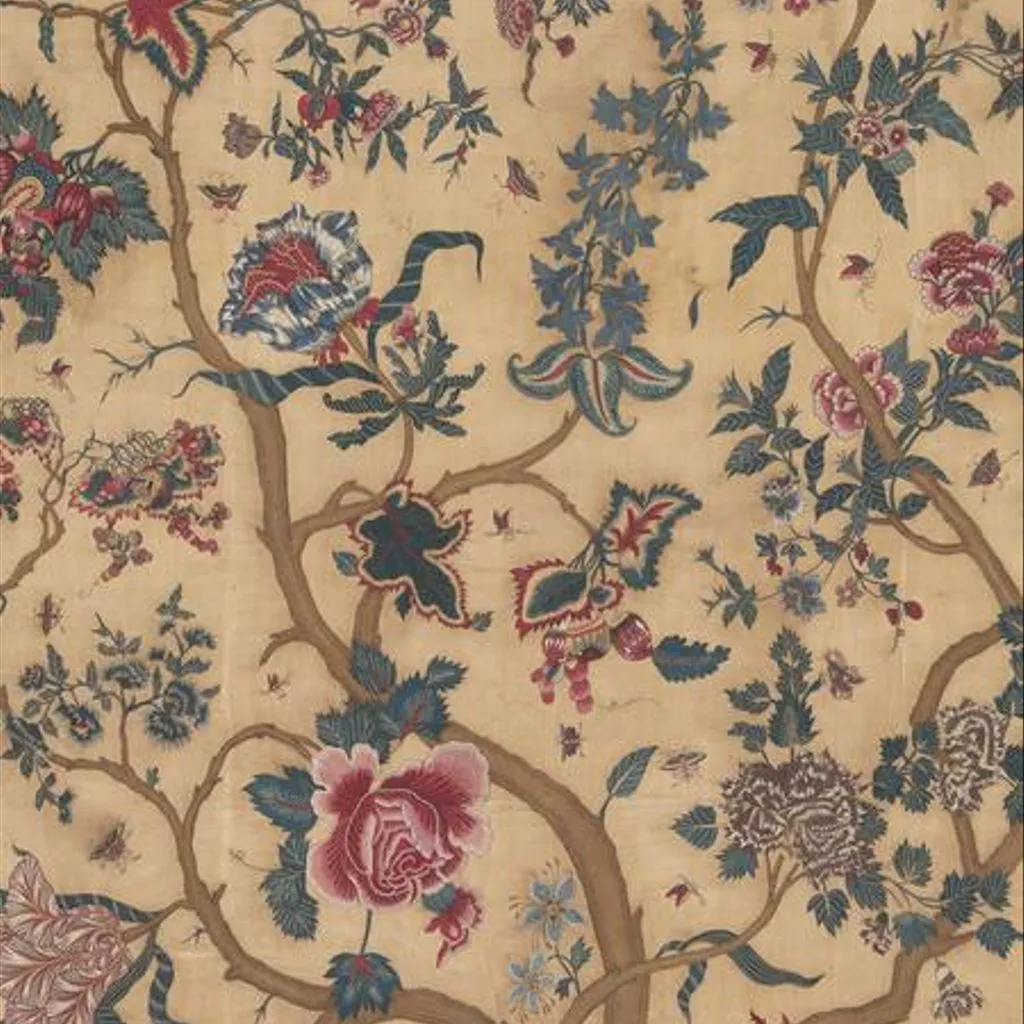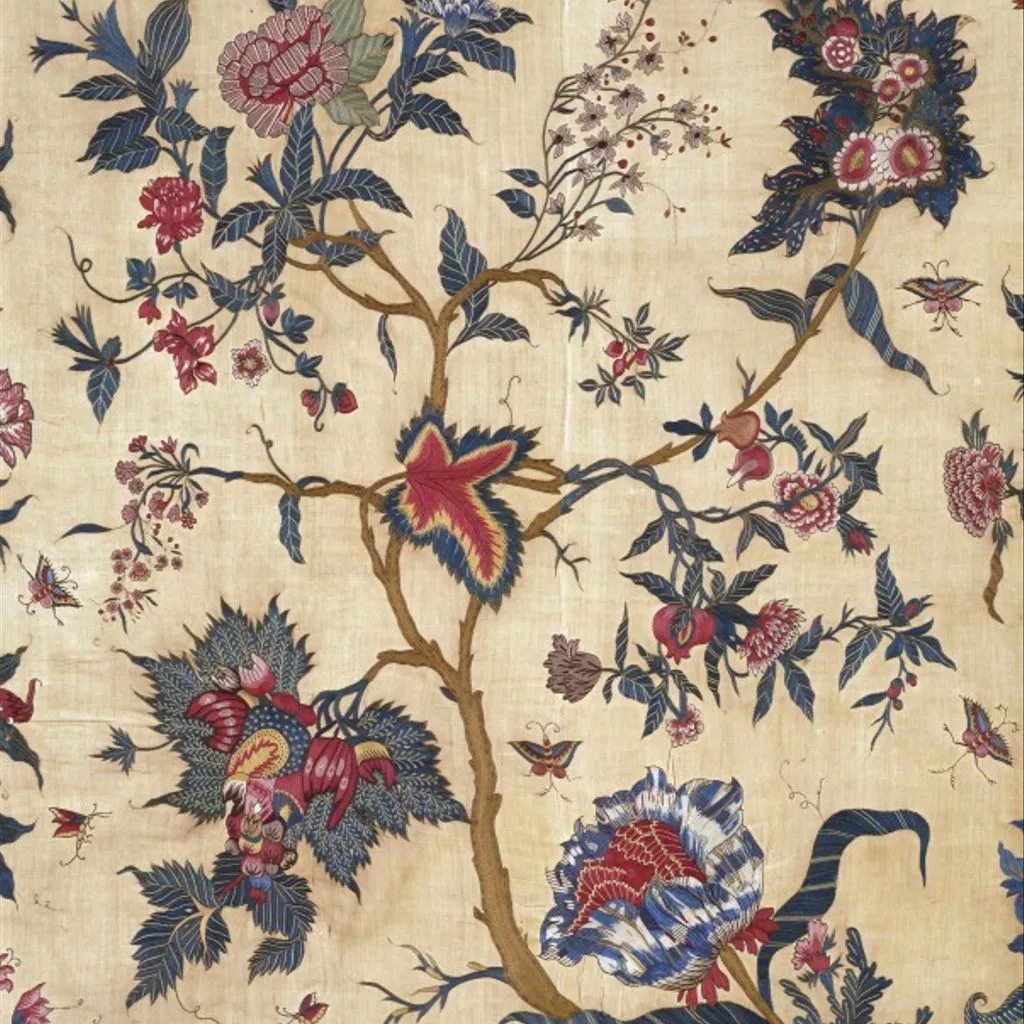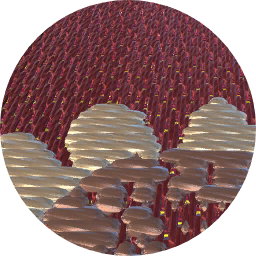Description
Embroidered palampore (not worsted as on the classification data below); Textile, worsted
Painted cotton chintz bedcovers and hangings ('palampores') with tree designs were widely used in Britain and Holland in the 18th century, and they were also made in embroidered versions, like this one. Embroidered palampores were particularly popular in Holland.
This magnificent bed-cover or wall-hanging, called a palampore, is entirely embroidered in very fine silk chain-stitch on cotton. The stitches are so fine that the hanging appears to be printed unless it is closely examined. This type of fine chain-stitch is done with a combination of a needle and a leather-worker's hooked awl called an ari, a technique particularly associated with the professional embroiderers of the Mochi community from Kutch in Gujarat, western India.
This type of exotic tree pattern was immensely popular in Britain and Holland for furnishings and bed-hangings during the 17th and 18th centuries. While many of them were made of painted and dyed cotton (known as chintz), some also used the same designs in embroidery, as in this piece.
The main design is of an exotic flowering tree growing out of a rocky mound. It bears many flowers of different shapes, sizes and colours, as well as multi-coloured leaves. There is a wide embroidered border integral to the piece, in a meandering floral design with a similar range of colourful leaves and flowers, and an outer border of a smaller floral meander. The design is embroidered in silk thread in chain stitch, on a cotton ground.















